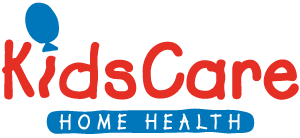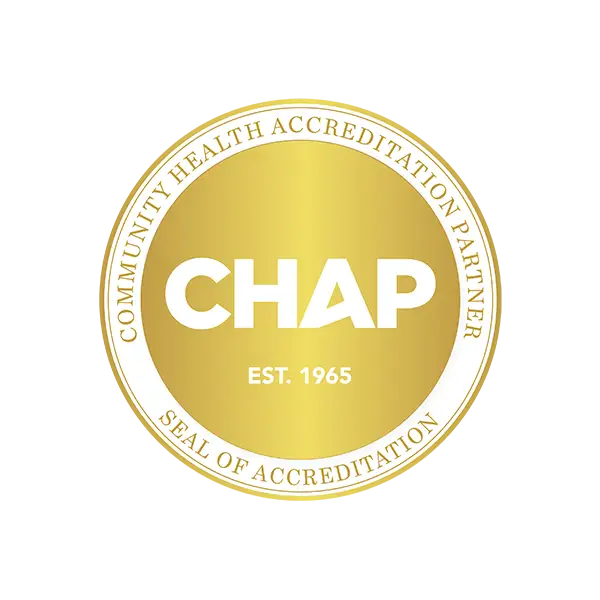
Pediatric occupational therapy (OT) is a rewarding, hands-on medical career focused on helping and supporting children to develop, improve, or recover everyday living skills. If you are interested in pursuing a career as a pediatric OT, today’s post includes everything you need to know about this holistic medical career. We will explore the role of a pediatric occupational therapist in depth, including the holistic role of occupational therapists in general, as well as the roles, responsibilities, and education of pediatric OTs specifically.
Generally, What Do Occupational Therapists Do?
The American Occupational Therapy Association1 defines an occupational therapist as someone who “helps people across their lifespan participate in the things they want and/or need to do through the therapeutic use of everyday activities (occupations)” – i.e., activities of daily living, work, play, education, leisure, rest and sleep, and social participation. Although this definition provides insight into what “occupational” means, it does not answer the burning question: what exactly does an occupational therapist do?
In general, OTs work with patients of all ages, including children, whose illness, disability, or injury impacts their ability to perform activities of daily living (ADL). All occupational therapists apply evidence-based practices and a holistic perspective to help patients reach their goals. Occupational therapy differs from physical therapy or nursing because it focuses on treating the whole patient rather than a specific injury or physical disability. For example, helping a child diagnosed with Sensory Processing Disorder (SPD) through play-based activities to gradually desensitize them to the textures and sounds they find overwhelming.
What Does a Pediatric Occupational Therapist Do?
Occupational therapy offers various specialties for those who want to focus exclusively on a particular demographic, such as pediatric occupational therapy. What does a pediatric occupational therapist do for a child? Let’s say a toddler displays signs of delayed fine motor skill development. Difficulty mastering these skills can impact their ability to perform everyday tasks efficiently, like tying shoes, writing, buttoning, or using utensils. In this case, the pediatric occupational therapist will focus on assessing the child’s strengths and challenges to develop targeted interventions. These strategies and therapies can help the child overcome motor challenges, participate fully in daily activities, and reach their full potential.
Another example of pediatric occupational therapy is post-surgery interventions to get young patients back to performing daily activities, such as a child having hand surgery to repair a fracture. In this case, the occupational therapist will assess and work with them after surgery to encourage repaired mobility and function in the affected hand. This work can involve pain management (positioning, gentle exercises, ice or heat therapy, and relaxation techniques), range of motion interventions, and activities of daily living (ADL) training, like writing or getting dressed.
Specific Pediatric OT Roles and Responsibilities

Pediatric occupational therapists can work with children anywhere needed, such as at home, hospitals, schools, early intervention programs, or rehab facilities. However, they do not diagnose conditions. Instead, a pediatric occupational therapist’s role is to assess the child’s needs and identify goals for overcoming physical, mental, and social challenges. During the initial assessment, the pediatric OT will review medical histories, ask questions, and observe actions and tasks to determine the best treatment plan.
Armed with this information, pediatric occupational therapists are responsible for creating, implementing, and managing a treatment plan to help young patients reach their goals. Although these goals are specific to each case, here are a handful of examples of what a pediatric occupational therapist can help facilitate with their patients.
- Managing and regulating sensory input.
- Performing tasks more independently, such as getting dressed.
- Improving fine motor skills to support activities of daily living (ADL).
- Facilitating mobility and reintegration into ADL post-surgery, injury, or medical diagnosis.
- Promoting balance and coordination.
Following are some typical daily activities or duties a pediatric occupational therapist may perform during the course of a treatment plan:
- Review the patient’s medical history and assess their need for support.
- Evaluate the patient’s home and other environments to make adaptations as needed.
- Develop a treatment plan with defined goals and clear stages.
- Define the patient’s need for assistive devices and execute training for proper use.
- Help and support patients perform everyday tasks that are too difficult.
- Teach the patient and caregivers how to use equipment selected for their support.
- Support the patient’s movement and independence by demonstrating exercises and techniques that enable goals.
- Work closely with the patient’s network of health professionals, caregivers, social workers, teachers, and more to determine the best care and process.
- Offer education for the patient’s family, school, etc.
- Assess the progress of the patient to determine future interventions and update other health professionals on progress or changes.
Overall, a pediatric occupational therapist works with young patients independently (and in conjunction with primary care and other providers) to help them learn how to overcome challenges, meet objectives, and participate in daily activities safely.
Required Skills
Pediatric occupational therapy requires both soft and hard skills. Among the soft skills, empathy, patience, and compassion are paramount. After all, occupational therapists typically work with patients during a difficult time, tasked with improving the patient’s daily activities and interactions.
Strong communication, problem-solving, and organizational skills are also necessary for comprehensive treatment implementation and management. Also, technical skills, including familiarity with computer systems and databases, are essential and often heavily utilized throughout patient cases. In some cases, occupational therapists may also need to lift and move clients.
Occupational Therapist Required Education
Pediatric OTs have training in the physical, psychological, and social aspects of human functioning. Overall, their education is grounded in anatomical and physiological concepts and psychological perspectives. The following outlines the typical educational pathway required to work in occupational therapy.
- Bachelor’s Degree: Many OTs acquire a bachelor’s degree in a related field, such as psychology, biology, kinesiology, sociology, or health sciences.
- Graduate Degree/Occupational Therapy: A master’s or doctoral degree in occupational therapy provides education and training in occupational therapy theory, practice, assessment, intervention, research, and professional ethics.
- Clinical Fieldwork: Supervised clinical fieldwork in various practice settings, such as hospitals, rehabilitation centers, schools, community clinics, and mental health facilities, allows students to apply their knowledge and skills in real-world contexts under the guidance of experienced OT practitioners. For those interested in pediatric occupational therapy, fieldwork with children is highly encouraged.
- Licensing and Certification: Once the occupational therapist degrees and fieldwork are acquired and satisfied, the next step is licensing. The occupational therapist licensing requirements vary by state or jurisdiction but typically include passing the National Board for Certification in Occupational Therapy (NBCOT) examination. Also, some states may have additional licensure requirements, such as background checks or jurisprudence exams.
Specific Pediatric Occupational Therapy Education
Although not required, pediatric occupational therapists may choose to pursue additional certifications to demonstrate their expertise in working with children. For example, the Board Certification in Pediatrics (BCP) offered by the American Occupational Therapy Association (AOTA) recognizes advanced knowledge and skills in pediatric occupational therapy.
Occupational Therapy Opportunities
Occupational therapists, in general, have the opportunity to broaden their specialties in one or more areas throughout their careers. Adding a specialty demonstrates advanced knowledge in an area they are passionate about, enhances credentials, and opens doors to new job possibilities or grant funding. The American Occupational Therapy Association offers advanced certification programs in various areas of specialty: Pediatrics (children), Gerontology (seniors), and Physical Rehabilitation, offering practitioners plenty of flexibility to diversify their experience.
Is a Pediatric OT Career Worth It?

Not only is occupational therapy a rewarding career – it’s also a growing career. According to the Bureau of Labor Statistics (BLS), employment for occupational therapists will likely grow 14 percent from 2021 to 2031, which equates to roughly 10,100 more jobs in the field through the next decade. Furthermore, the approximate median annual wage for occupational therapists, including pediatric specialty, is approximately $85,000-$95,000. Moreover, Pediatric OTs with advanced certifications, such as the Board Certification in Pediatrics (BCP) from the American Occupational Therapy Association (AOTA), often experience higher salaries.
Becoming a Pediatric Occupational Therapist
If the roles of pediatric occupational therapists described today sound like the right career path, the next step is to obtain the necessary degrees, certifications, and licensure. It’s a rewarding career filled with many opportunities to help young patients reach their full potential.
Once licensed, if working with children in the role of occupational therapist sounds like a rewarding career path, then visit KidsCare Home Health for more information about in-home pediatric occupational therapy. As a pediatric home health agency, Kidscare Home Health serves children with special needs across the country. We focus on pediatric occupational therapy, speech therapy, physical therapy, and nursing for children up to 18 years old, providing comprehensive benefits and support to our network of therapists and support staff.
Join KidsCare Home Health as a Pediatric Occupational Therapist
FAQ - Occupational Therapist Roles
What is the role of a pediatric occupational therapist in schools?
Pediatric OTs in schools help facilitate a supportive and accessible learning environment. Occupational therapists contribute to the development of Individualized Education Plans (IEPs) for students with disabilities or special needs. They collaborate with teachers, parents, and other members of the IEP team to support students’ educational needs and promote their participation in the school curriculum.
What does an occupational therapist assistant do?
Occupational therapist assistants (OTAs) work directly under a licensed occupational therapist, assisting in occupational therapy treatment plans and interventions as needed.
Where can pediatric occupational therapists work?
Occupational therapists can work in a variety of environments, including a patient’s home, hospitals, rehabilitation facilities, outpatient clinics, schools, and other pediatric settings.
What is the difference between an occupational therapist and a physical therapist?
Although occupational therapists and physical therapists (i.e. physiotherapists) are similar, their roles have distinct differences. Occupational therapists address a broad range of physical, cognitive, emotional, and psychosocial factors that influence a person’s ability to engage in activities of daily living, work, school, and social participation. Physical therapists, on the other hand, primarily focus on restoring and optimizing physical function, mobility, and movement patterns in individuals with various health conditions.















